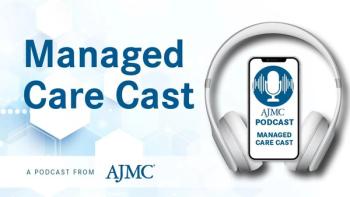
Zilucoplan Shows Rapid, Durable, Steroid-Sparing Benefits in gMG
Key Takeaways
- Zilucoplan demonstrates sustained efficacy in gMG, enabling rapid functional improvement and corticosteroid tapering, potentially altering disease management.
- Early responders maintained high response rates over 120 weeks, with consistent improvement in MG-ADL and QMG scores.
Zilucoplan (Zilbrysq; UCB) is a once-daily subcutaneous C5 complement inhibitor that has demonstrated long-term treatment benefits in patients who have acetylcholine receptor antibody–positive generalized myasthenia gravis (gMG).
Zilucoplan (Zilbrysq; UCB), a once-daily subcutaneous C5 complement inhibitor, continues to demonstrate sustained clinical value in patients with acetylcholine receptor antibody–positive (AChR Ab+) generalized
These findings were presented at the recent Myasthenia Gravis Foundation of American 15th International Conference on Myasthenia and Related Disorders, and they comprise 120-week follow-up results from the phase 3 ongoing open-label extension analysis of patients first randomized to zilucoplan in a prior double-blind phase 2 study (NCT03315130) and a double-blind phase 3 study (NCT04115293).
Early Responders Maintain Long-Term Gains
Among the 93 patients included in this analysis, Myasthenia Gravis-Activities of Daily Living (MG-ADL) scores and the Quantitative Myasthenia Gravis (QMG) scale were used to evaluate outcomes following self-administration of once-daily subcutaneous zilucoplan at a dose of 0.3 mg/kg.1 Responses were defined as improvements of at least 3 points on the MG-ADL score and at least 5 points on the QMG scale—both from baseline and absent of the need for rescue therapy, with the authors noting that “the percentage of time the patients spent in response was also calculated up to week 120.”
By the end of week 1, 43.0% of patients were considered MG-ADL responders (n = 40), and 33.3% were considered QMG responders (n = 31). For the remaining follow-up time through week 120, MG-ADL responders spent a median 98.9% (range, 5.8%-99.2%) of their time in response, and QMG responders, 99.0% (range, 2.5%-99.2%). Those who exhibited responses later spent 84.6% (range, 0.0%-98.3%) and 66.7% (range, 0.0%-98.9%) of their time in response, per MG-ADL and QMG, respectively.
While the zilucoplan early responders’ time in response was consistent at 99.0% for the entirety of the follow-up period, those in the late-response group still demonstrated a consistent response, ultimately spending more than two-thirds of their time in response overall, “showing that most patients became responders with continued use of zilucoplan,” the authors wrote.
Corticosteroid Tapering Reflects Functional Stability
There were 200 patients included in this second analysis, 54 of whom were on corticosteroids at baseline and for whom corticosteroid use was compared at baseline of the double-blind trial and again at week 120.2 For MG, corticosteroids are often administered in combination with acetylcholinesterase inhibitors to reduce symptoms,3 such as marked weakness and poor response to other treatments,4 but their long-term use can lead to such adverse effects as weight gain and higher infection risk.5
Overall, 61.1% of patients with baseline and week 120 data available were able to reduce their steroid dose or discontinue their steroid use compared with 9.3% of all patients (N = 86) who had to increase from their initial dose by a mean of 11.6 mg or start on the treatment. In those who reduced their dose, the mean reduction was 15.5 mg—from 23.0 mg/day at baseline to 7.5 mg/day by week 20—as they demonstrated a mean (SD) 6.6 (3.6)-point improvement on their MG-ADL score, “supporting that symptom control was not compromised by steroid tapering,” the authors wrote.
Among those who had to increase their dose or start taking corticosteroids, however, there was still a mean 7.4 (4.6)-point MG-ADL score improvement, with the authors noting this demonstrated sustained efficacy despite the heterogeneity of individual treatment. In addition, 32% of patients who started the 120-week period taking at least 7.5 mg/day were able to down-titrate their dose.
Ninety-seven percent of all patients experienced treatment-emergent adverse events, but no new safety signals were identified.
References
- Hewamadduma C, Bresch S, Freimer M, et al. Early and sustained response over time with zilucoplan in generalised myasthenia gravis: 120-week post hoc analysis of RAISE-XT. Presented at: 15th MGFA International Conference on Myasthenia and Related Disorders; May 13-15, 2025; Den Haag, The Netherlands. Abstract 83.
https://myasthenia.org/wp-content/uploads/2024/08/MGFAInternationalConferenceAbstractList_05.07.2025.pdf - Hewamadduma C, Freimer M, Genge A et al. Corticosteroid dose tapering during treatment with zilucoplan in patients with generalised myasthenia gravis: 120-week follow-up of RAISE-XT. Presented at: 15th MGFA International Conference on Myasthenia and Related Disorders; May 13-15, 2025; Den Haag, The Netherlands. Abstract 84.
https://myasthenia.org/wp-content/uploads/2024/08/MGFAInternationalConferenceAbstractList_05.07.2025.pdf - Corticosteroids. Myasthenia-Gravis.com. Accessed June 12, 2025.
https://myasthenia-gravis.com/corticosteroids - Zust C, Morren JA. What are the treatment options for myasthenia gravis if first-line agents fail? Cleve Clin J Med. 2023;90(2):81-84. doi:10.3949/ccjm.90a.22022
- Treatment: myasthenia gravis. National Health Service. Accessed June 12, 2025.
https://www.nhs.uk/conditions/myasthenia-gravis/treatment
Newsletter
Stay ahead of policy, cost, and value—subscribe to AJMC for expert insights at the intersection of clinical care and health economics.














































